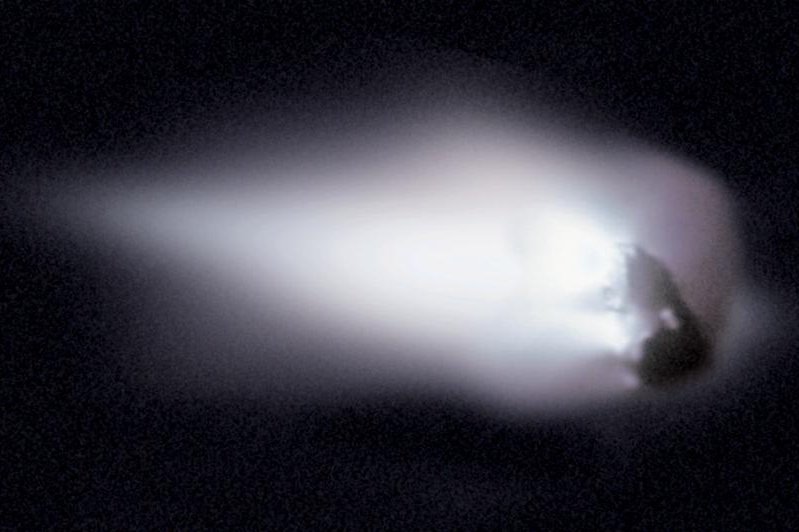Halley's Comet, whose fragments produce May's Eta Aquarid meteor shower, last passed by Earth in 1986. Photo by Halley Multicolor Camera Team, Giotto Project, ESA
WASHINGTON, May 4 (UPI) -- The Eta Aquarid meteor shower will peak on May 6, but sky-watchers will likely be able to spot meteors on the day before and after.
The best time to see shooting stars produced by the Eta Aquarids -- or just Aquarids -- will be during the early morning, pre-dawn hours of Thursday and Friday.
During its peak, the meteor shower will feature 20 to 40 meteors per hour. If you're lucky you can catch an earth-grazing fireball – a relatively slow-moving meteor that enters and then leaves Earth's atmosphere, burning like a firework along the way.
Meteors appearing in the tropics and southern hemisphere will be the brightest and most frequent, but viewers in the northern hemisphere should witness a decent show, too -- that is if the weather cooperates.
"By far, the best viewing of the meteor shower will be in a swath from the Plains and Mississippi Valley to the Gulf Coast and Florida, where mostly clear skies should dominate," meteorologist Jon Erdman told USA Today. "Viewing in both the West and East may be more challenging."
If the weather is clear, viewing should be ideal from an astronomical perspective.
"By good fortune, in 2016, the moon turns new at or near the shower's peak," EarthSky reported.
In the mid-northern latitudes that include most of the United States, watch for the meteor shower to radiate from the constellation Aquarius in the southeastern sky, just above the horizon.
The show continues through May 21, but the best viewing is before dawn Friday.
The streaking meteors are icy fragments left behind by the tail of Halley's Comet. As Earth's atmosphere collides with the comet's leftover debris, the fragments burn up in the friction of the upper atmosphere, producing the light show visible from Earth's surface. Halley's Comet, currently more than 3.1 million miles from Earth, will be visible again in 2061.
As Space.com reported, Earth's atmosphere will again intersect a patch of Haley's debris field in October, producing another meteor shower known as the Orionids.















